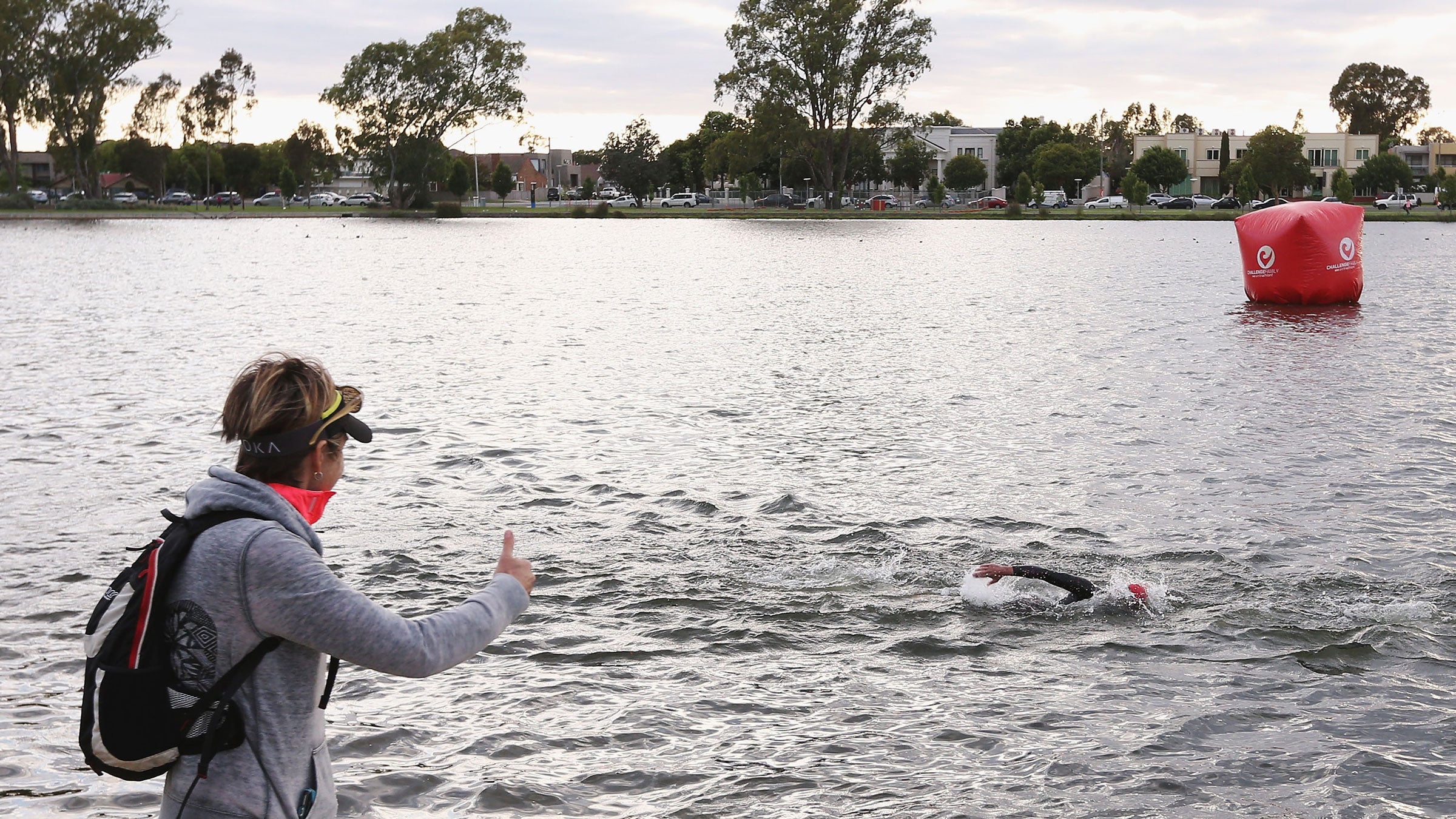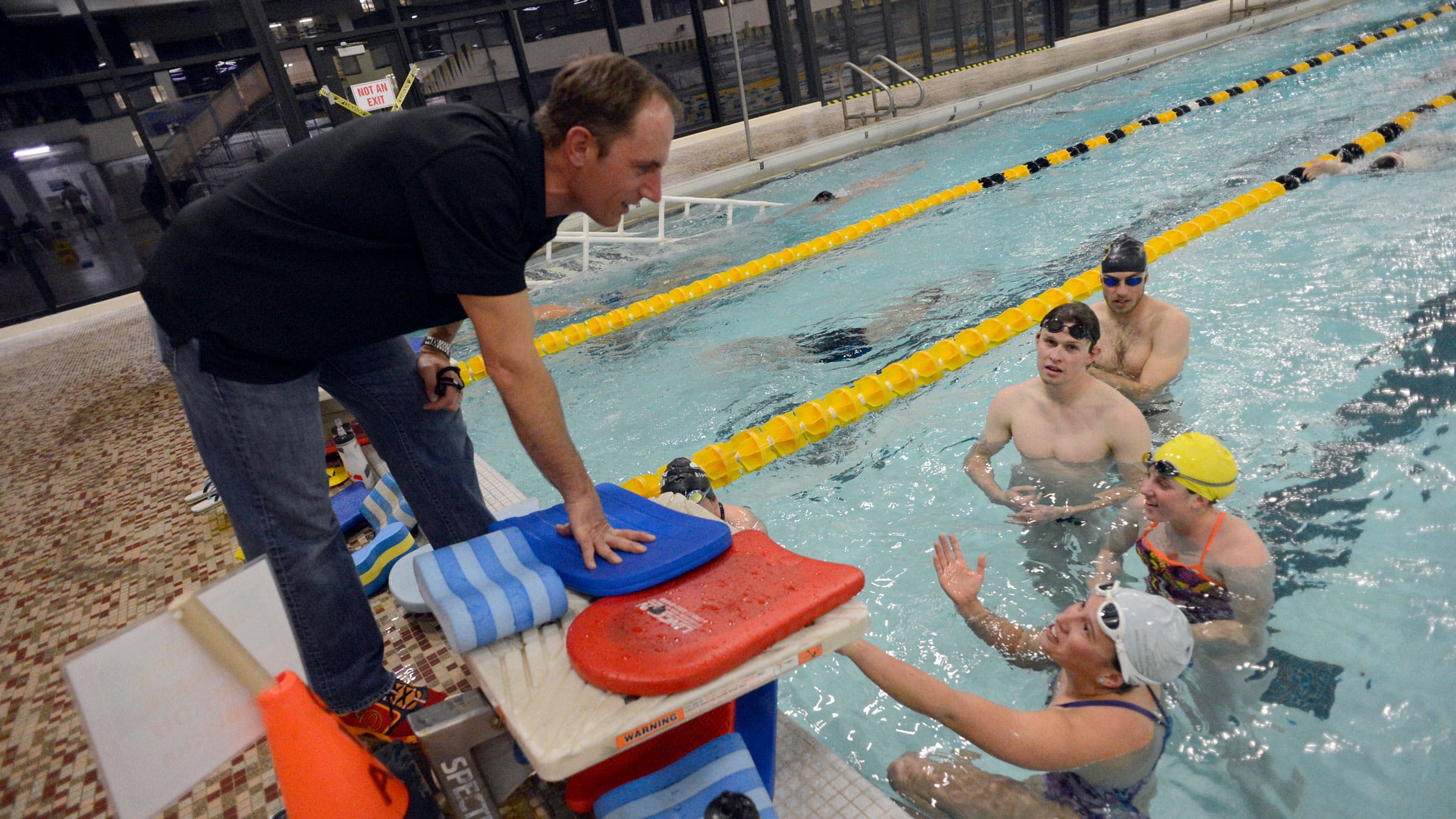Our Guide To Triathlon Coaching Styles

(Photo: Getty Images)
The beauty in having a variety of coaching voices and methodologies is that athletes have the opportunity to find the right fit for their specific needs. While the world’s top triathlon coaches share a lot, they also tend to have clear philosophies that set them apart. Whether you succeed with heavy volume, strive for perfect technique, or need to sharpen your mental skills, there’s a coach out there for you. Learn about four (of many) training styles from some well-known coaches below.
1. The Aerobic Aficionado
Who this triathlon coach is for: The always-go-hard athlete who has experienced burnout, injuries, or who is looking for a new approach for longevity
Dr. Phil Maffetone paved the way for heart-rate-based training in the late 1970s, and his former athlete, six-time Ironman World Champion Mark Allen adapted those theories for both himself and the athletes he coaches. The premise of this style is to set training guidelines based on heart rate zones, taking into account age, training history, and current fitness. From there, workouts are divided into two simple categories: aerobic (fat burning, endurance) and anaerobic (carbohydrate burning, speed). The majority of your work is spent in the aerobic zone to build your endurance engine, blended with speedwork and strength training for fine-tuning.
The underlying idea, Allen explained, is to give athletes training that will help them improve year after year without getting huge, unsustainable jumps in fitness that eventually turn into downslides and burnout. “As much as everyone loves the speed workout—you’re trashed, you feel like you did something—that has a limited amount of benefit in the overall fitness puzzle that you can gain from training,” Allen said. “However the fat-burning element is huge in the amount of fitness gains you can develop if you have the time and patience.” Admittedly a former go-hard athlete, Allen realized through his own trial and error that focusing on his aerobic capacity not only improved his overall performance but created longevity in the sport. (Allen, now 62, said he’s never dealt with overuse injuries and can still train the way he wants to today.)
The most difficult challenge of this approach is transitioning an athlete with an overly developed anaerobic system and underdeveloped aerobic system. If you fall into that camp, first determine your Maximum Aerobic Function (MAF) based on the 180 minus your age formula (Maffetone explained the calculation here). Dedicate yourself to training below that number for a period of 4–6 weeks and track your progress along the way. To maintain a low heart rate during a run may require walking at first, Allen warned, but with patience, you will be able to run at a faster pace with a lower heart rate and ultimately become more metabolically efficient (read: fit).
2. The Optimizer
Who this triathlon coach is for: Time-crunched athletes with competing life priorities
One of the most difficult aspects of triathlon training as an age grouper is the fact that we have full-time jobs, busy family lives, and the stress of, you know, life in general. While professional triathletes can build their lives around training, age-groupers have to take the opposite approach. A 20-hour Ironman training week just isn’t in the cards for everyone.
Matt Dixon of Purple Patch Fitness understands this challenge well as a coach to both high-level pros and career-driven amateurs. The Well-Built Triathlete author’s “quality over quantity” approach integrates training into a time-starved athlete’s life versus adding it on top of other life stressors. “Instead of starting with a pre-determined set number of hours of weekly training to hit, I believe athletes should view training from the other side of the equation,” Dixon said. “In any week, set out the non-negotiable life commitments from work and family, then go on an optimization challenge. What is the best training we can achieve within context of these non-negotiable commitments—while also leaving a little breathing room for good sleep, eating habits, and some downtime—is the heartbeat of quality over quantity. It is better to nail the whole recipe of life stress and training stress than just chasing more hours.”
Dixon’s pragmatic methodology has led to the notion of the 10-hour training week, a concept he dives into in his book, Fast-Track Triathlete. This approach isn’t just low mileage and high intensity—you still need to focus on the small things and adopt a long-term mindset. Establish a few key habits: Fuel post-workout and hydrate daily, commit to going really easy on the easy days, and don’t chase weekly hours as a barometer for training success.

3. The Analyzer
Who this triathlon coach is for: Athletes who haven’t dipped into the world of data and/or who may have hit a plateau without it
With the evolution of devices in the last 20-plus years, it has become incredibly easy to monitor all sorts of data with the press of a button. On the forefront of using data in triathlon was Joe Friel, who has written extensively on the topic and co-created TrainingPeaks.com as a way to track and analyze metrics. Friel advocates for not just looking at one element—watts or heart rate, for instance—but suggests using a combination of tools to get the full picture. “Most athletes think of heart rate and cycling power as being, essentially, just different views of the same thing,” he said. “They aren’t. Heart rate tells the athlete what his or her effort is, but power reveals what the athlete’s performance is. Each is important.”
As Friel explained, the higher an athlete can get his output (performance = power, pace, or speed) and the lower he can make the input (effort = HR, lactate, or kilojoules), the more efficient the athlete is. “I realized this very basic concept many years ago and came up with a simple formula for expressing it,” Friel said. “If you divide the power for an aerobic workout by the heart rate of that same workout—or segment thereof, such as an interval—then you have something I called the Efficiency Factor. If EF increases over time for a certain type of workout (or segment), then the athlete is becoming more efficient at that certain level of input or output.”
Tracking data and analyzing data are two totally different things, of course. If the idea of monitoring your EF sounds intimidating, remember that there are coaches who specialize in geeking out on numbers and would happily take your metrics and use them to shape a training program for you.
4. The Feeler
Who this triathlon coach is for: Data-obsessed athletes who need to break an addiction, or any athlete who has never even tried racing without looking at a device
Being able to gauge a threshold effort without knowing your exact heart rate or nailing the perfect race pace without adhering to a specific wattage is a powerful athletic tool. This free-spirited “go by feel” approach can take time to accomplish and certainly isn’t for everyone. But the addictive nature of numbers-chasing can sometimes be a performance deterrent, said Siri Lindley, who has coached world-champion athletes such as Mirinda Carfrae using the by-feel approach.
“I believe that Garmin is an unbelievable tool, but as a coach, I think having all those numbers puts you constantly in a state of judgement,” Lindley recently said on a 303 Endurance Podcast. “When you’re looking at your heart rate and power, you’re thinking, ‘Am I good enough right now? Am I going hard enough? Am I riding bad?’”
As one of the winningest triathletes in history, Lindley discovered during her career that racing from the heart—and putting out the effort that feels right in the moment—is where the greatest performances come from. Think about it like this, she explained: If you’re well trained and tapered heading into a race, your body should be ready to perform at a whole other level. But if you start to see new numbers on your watch during the race and worry that you’re going too hard, you’re not allowing yourself to truly feel the training effect. All that being said, Lindley doesn’t shy away from using data-focused training for certain athletes. Take an athlete who has never used data and has been racing for 10 years. If she has lost some desire or motivation, the stimulation of incorporating data could actually inspire her in a new way—although Lindley still wouldn’t have her race with it.
If racing without your device seems scary, a good first step might be to try a simple track workout (i.e. 4x400s) with the face of your watch covered up. Aim to keep a consistent effort and review the intervals later to see if your perceived effort matched your actual effort. Eventually, try the cover-up method at a low-stakes race and see what you learn.